Noze Pribram 2023
The knife show in Příbram’s cultural center Legionaire has rightly earned the reputation of a national exhibition. ‘Příbram’ is the only Czech two-day exhibition, and is traditionally being held in second weekend of September. The year 2023 marked its 32nd anniversary, now being organized by Viktor Cais which took over after P. Formánek, father founder, retired.
Text and pictures: Martin Helebrant
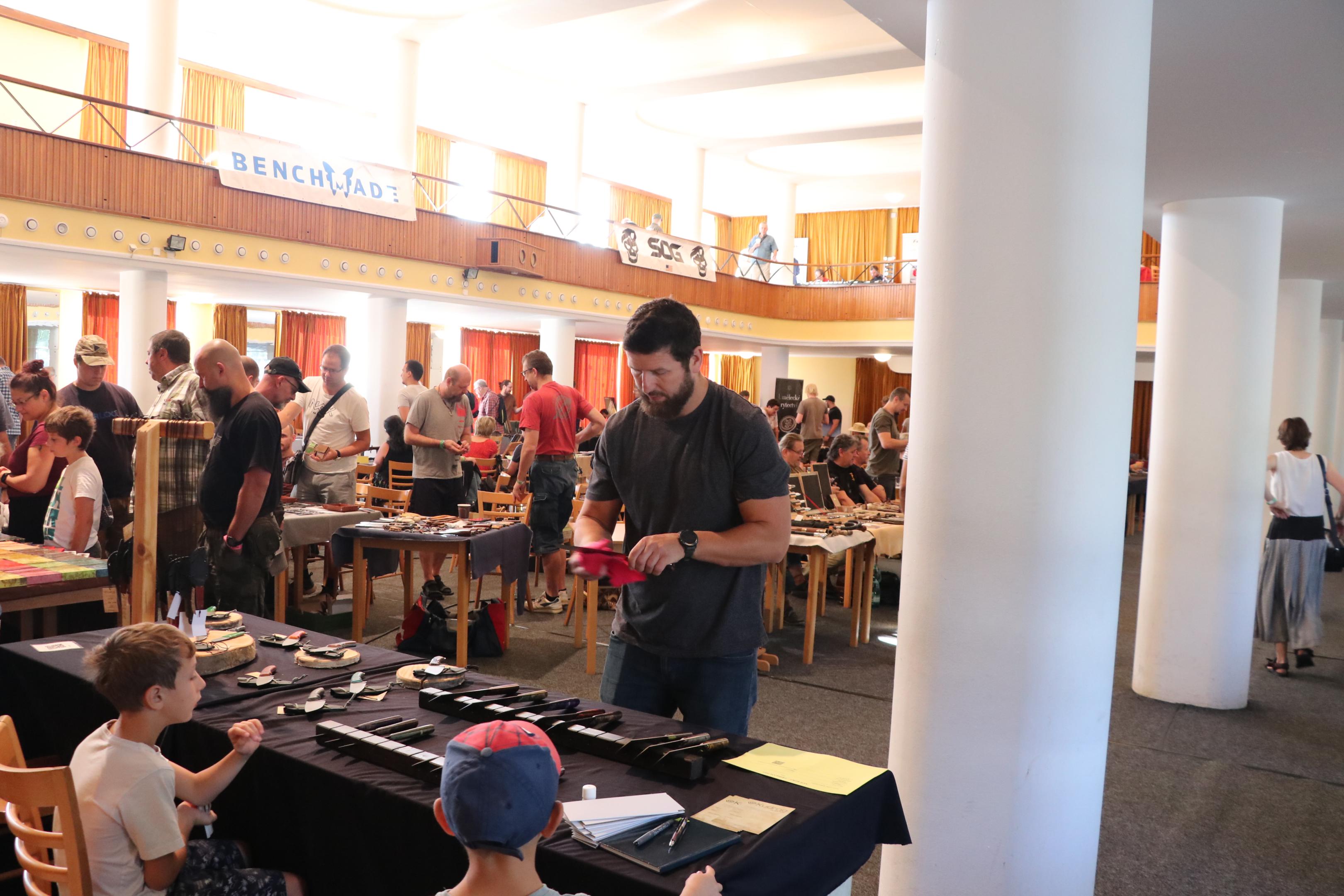
The 32nd edition of the Příbram knife show, on a quite Sunday morning.
The second September weekend was extremely busy. There were at least four parallel events that needed my presence, so I had to prioritize. Finally, I decided to come to Příbram on Sunday, the second day of the show. To my surprise, the exhibition hall was full of tables and although some people said that the best had already been sold, there was still a lot to look at. There were approximately 110 exhibitors, with ca. 70 master knifemakers. The rest was industrial production, different materials and related products.
It is true, that the participation of the ”old guard” was limited. Gentlemen like Pajl, Hons, Leier, or “Jakuza” Jarý and Kurota were not present. Some of them are simply growing old and limit their participations, others were busy with activities like reconstruction of the family house or moving their workshop. Simply, this is what has been accumulated this year. The crowd counted about 1,800 visitors, which is an impressive number these days.
After few years of silence, the Knife of the Year award was opened in 2023 again. The visitors could vote by a simple QR code and smart phone application. In my opinion, this is a very clever and efficient solution, maybe the best way of popular election I have seen in recent years. The winner was Jakub Adamuška’s double edged dagger with sandwich GoMai blade and handle of ebony with buffalo horn. The second place was for French cutler George Waugh with his large chef’s knife with carbon damask blade. The third became Stanislav Mátl with his fixed blade knife in Persian style, again with a carbon damask blade.
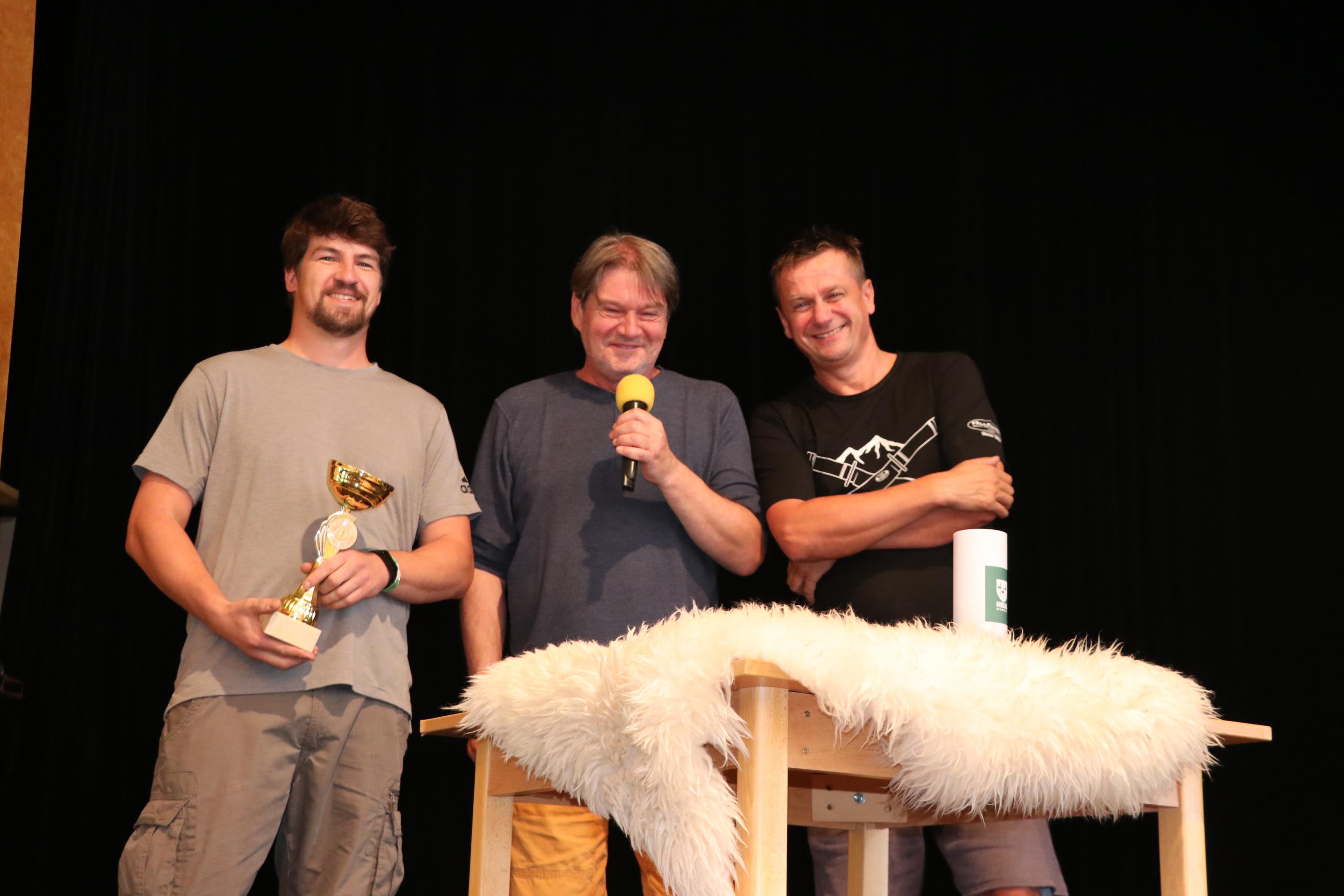
Jakub Adamuška (left, winner) and organizer Viktor Cais at the announcement of the results of the Knife
of the Year competition.
All three winners were very well made, but in general they were a bit of a surprise to me. It is interesting that the vox populi can differ significantly from the opinion of experts / masters knifemakers. Especially the second place was been a surprise, regardless of the fact that even I can recognize increasing popularity of kitchen knives in recent years. We can dispute it, we can have different opinion but as a whole: Vox Populi, Vox Dei – the voice of the people is the voice of God. Full stop.
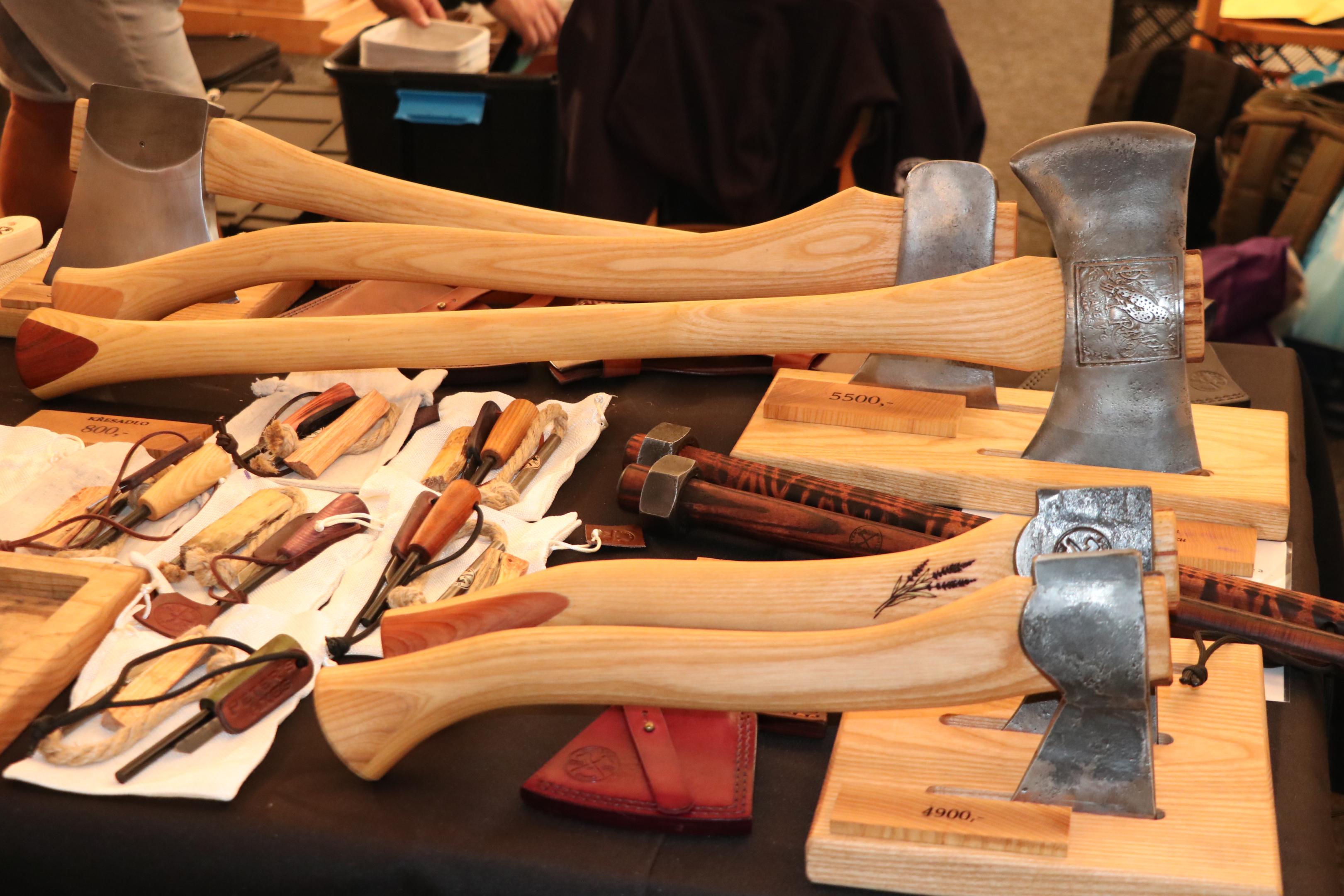
Axes have become an indispensable part of the recent knife exhibitions, Příbram was no exception.
Regardless the absence of the “old guard”, there was lot to look at. Year after year I notice an increasing offer of axes of all sizes. Even Aleš Karban offered small hatchets (called “tchacan” in the Moravian language). After couple of idle years exhibitors from the Baltic states, appeared again on the exhibition. Udanov Knives focussed on relative simplicity; a purpose driven shape of knives, which seemed to me to be influenced by the traditional Finnish knives (not far from Baltics in fact). Similar simplicity and efficiency I see in the knives of Arkady Dabakyan, master black smith and knifemaker of Georgian origin, now living in Prague. The Berezhny brothers offered knives rich in decoration of an eastern, partially byzantine style. Maybe not everyone likes this kind of knives, but no one can deny the excellent craftmanship of Brother Berezhny work. If your preference is rather for the utilitarian, Spartan knives, you will be most likely pleased by knives from Lubomír Šmidrkal or Pavel Holub from Hato knives. What pleased me a lot were the new knives from the smithy of the Czech master of figural damask, Pavel Ševeček. His Cat and Mice knife is a direct extension of his previous work, while his knife with a carbon feather damask blade is a brilliant example what a real master blacksmith can achieve with nothing more than a traditional furnace, anvil, and hammer.
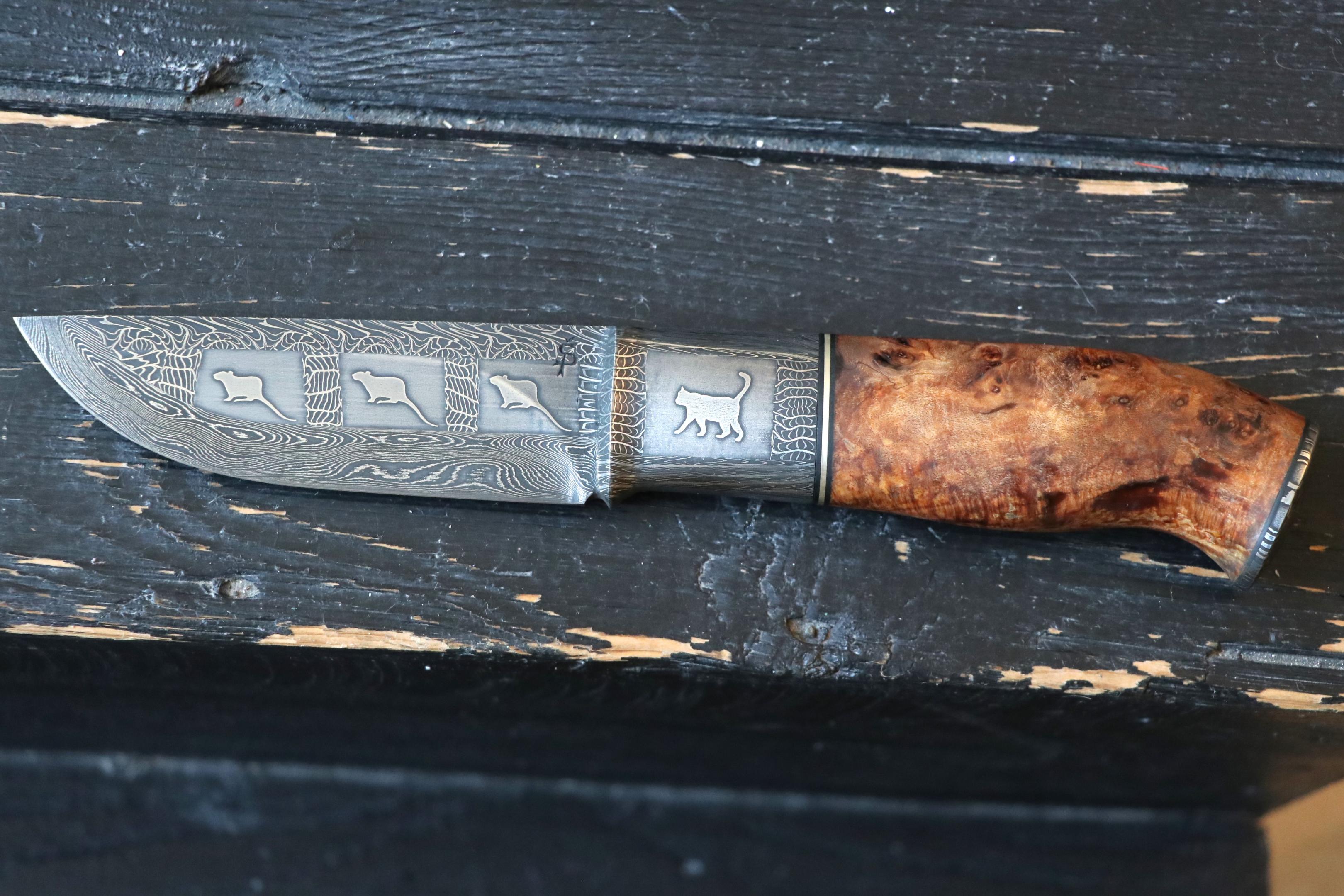
Cat and Mice knife of the Czech master of figural damask, Pavel Ševeček.
High quality folding knives were presented by Miloš Kyslinger, who returned after a pause back to the exhibition hall. And I should not forget to mention the folding knives of Mr. and Mrs. Tesařík, whose production commands atop of the function and perfect craftmanship also a significant artistic value. Personally, I was pleased by the knife of Jan Hamerník with a damask blade and carved eagle head handle. Mr. Hamerník, whom I encountered in Příbram for the first time. He commands an individual, distinctive style that is influenced by the style of the old Red Indian totems. It is not seen on Czech exhibitions every day, maybe it is a resemblance of the specific Czech and Moravia tramping movement.
Let me to finish with the table of Janos Madaras from Hungary. Probably there is no Czech exhibition without his presence. His offer is broad, covering both folding and fixed blade knives, in all price levels, starting with simple, affordable ones up to the expensive segment. Mr. Madars is a silent man with white hair and a mustache and he has a knife for everyone. In his native Hungary is a recognized master, awarded by the ministerial appreciation for the preservation of the traditional native craftsmanship. Among other knives on his table there was a pretty folder in traditional Hungarian style (so called bicska) with brass bolsters and horn scales decorated by brass and mosaic pins.
It makes no sense to describe all knives in Příbram, pictures say more. Atop of knives there was a very interesting table with swords in a cane or umbrella on the table of Mr. Chalupný, another attractive offer was the table of eXtreme EDC with different boxing rings, boxers and other similar self-defensive tools. Again present in Příbram was a table with handmade fountain pens.

Umbrellas and canes with hidden swords, but also gravity knives and other “sharp stuff” on the table of
Bohdan Chalupný.
Materials
The number of exhibitors offering materials for knife making is somehow diminishing, this concerns especially the steels. As an exception, I would like to mention the table of Futuron Forge that grew to become a real worldclass supplier of high-grade stainless damask steel. This year it has presented a real specialty – damask with a meteoritic iron / steel. While the offer of steel seems to diminish, offer of materials for grips and scales was abundant and on many tables.
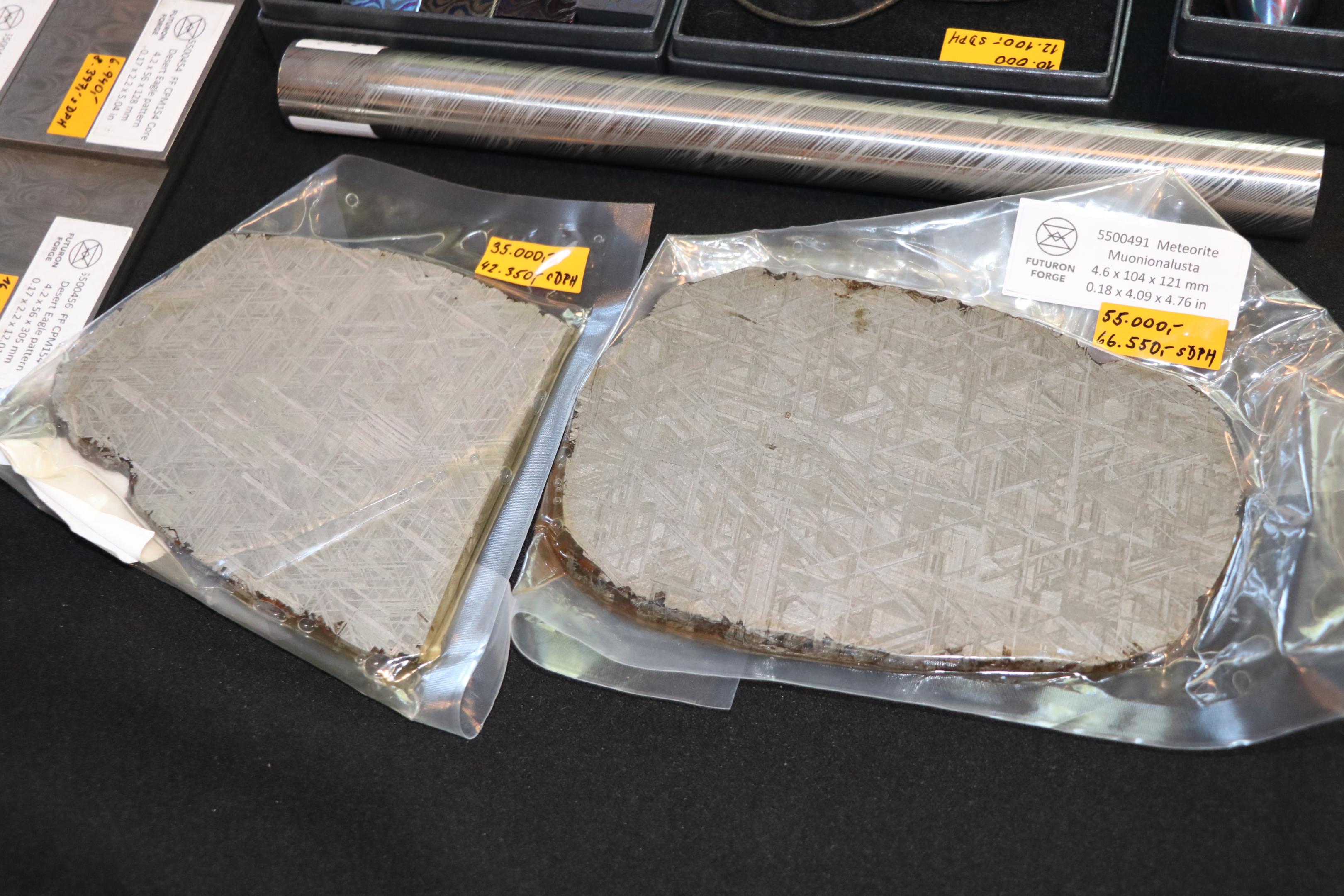
Meteoritic damask by Futuron Forge.
On the external exhibition spaces in the back yard were traditional presentations of blacksmithing and a bit of a hodge podge of clothing and bijouterie like plaid brooches, including my favorite booth in the style of the Hudson‘s Bay Company trading post, offering products for reenactment of the Wild West. Last but not least the catering was here, at a surprisingly acceptable price.
The question remains, what is going to become of the exhibitions. Since the end of the covid epidemy I feel that exhibitions in general (not only the knife exhibitions) are somehow searching for the new face. Příbram and the knife exhibitions in general still hold their ground, anyway. In the case of knives, the possibility to touch and try a specific one is hard to be dispensed. But in general shops with somehow standardized products, be it industrially made knives, raw materials for knife making like steels, pins, rivets, leather etc. are more and more often moving to the internet. And similar to this, some top notch masters say that they sell their knives via Facebook or other media. For them, an exhibition is rather a place to complete the already agreed trade (hand over an already ordered and paid knife). For me, the exhibitions are needed and to large extent necessary where exhibitors present their capabilities and show themselves as true masters in an open and fair competition, uplifting the entire population or society. Therefore I hope that exhibitions, especially ones of high reputation and tradition like Příbram (and Prague and Brno) will survive and show us their smiling face.
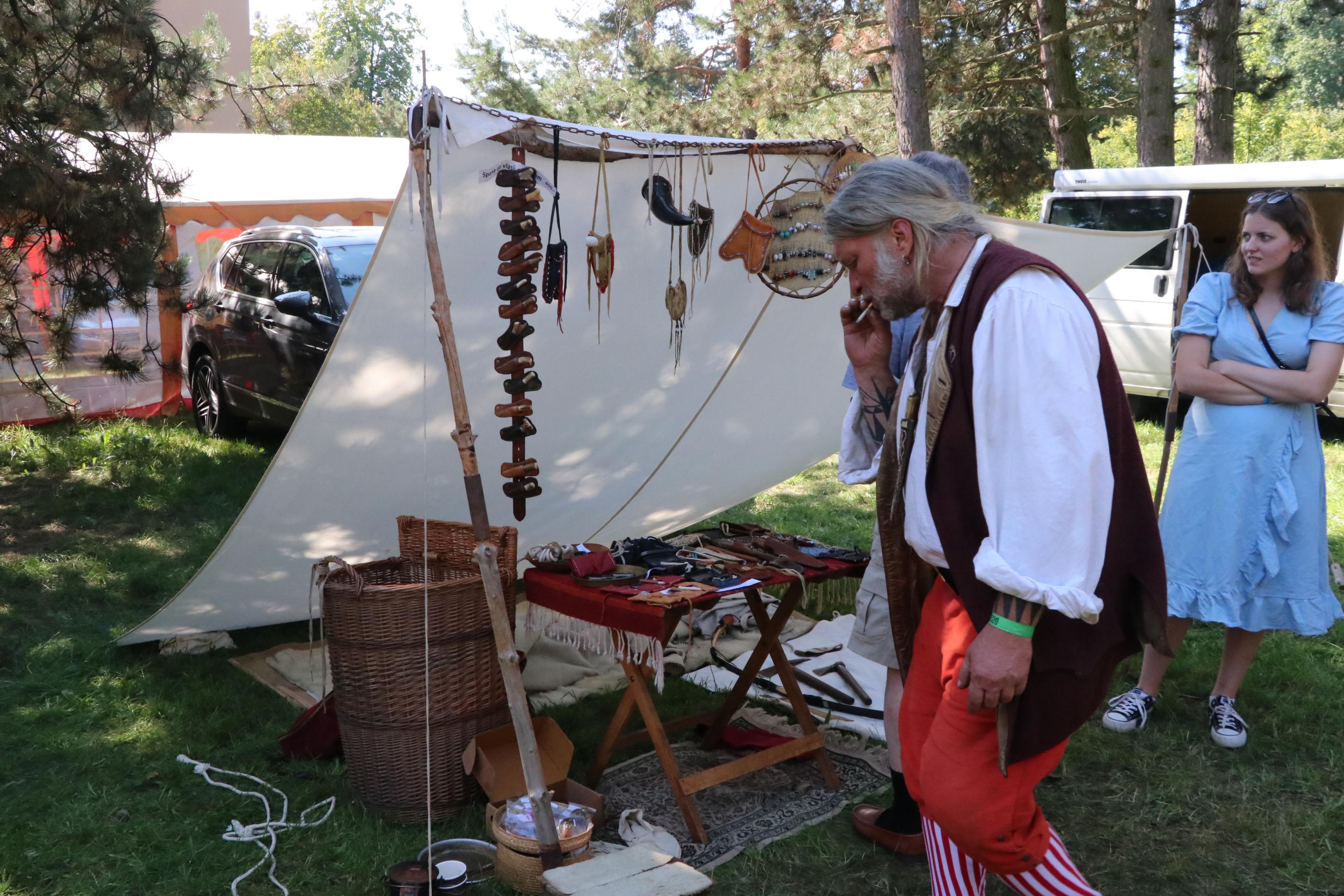
Without the cigarette and cars in the background, this could be a trading post of the 2nd half of 18th
Century Hudson’s Bay Company.
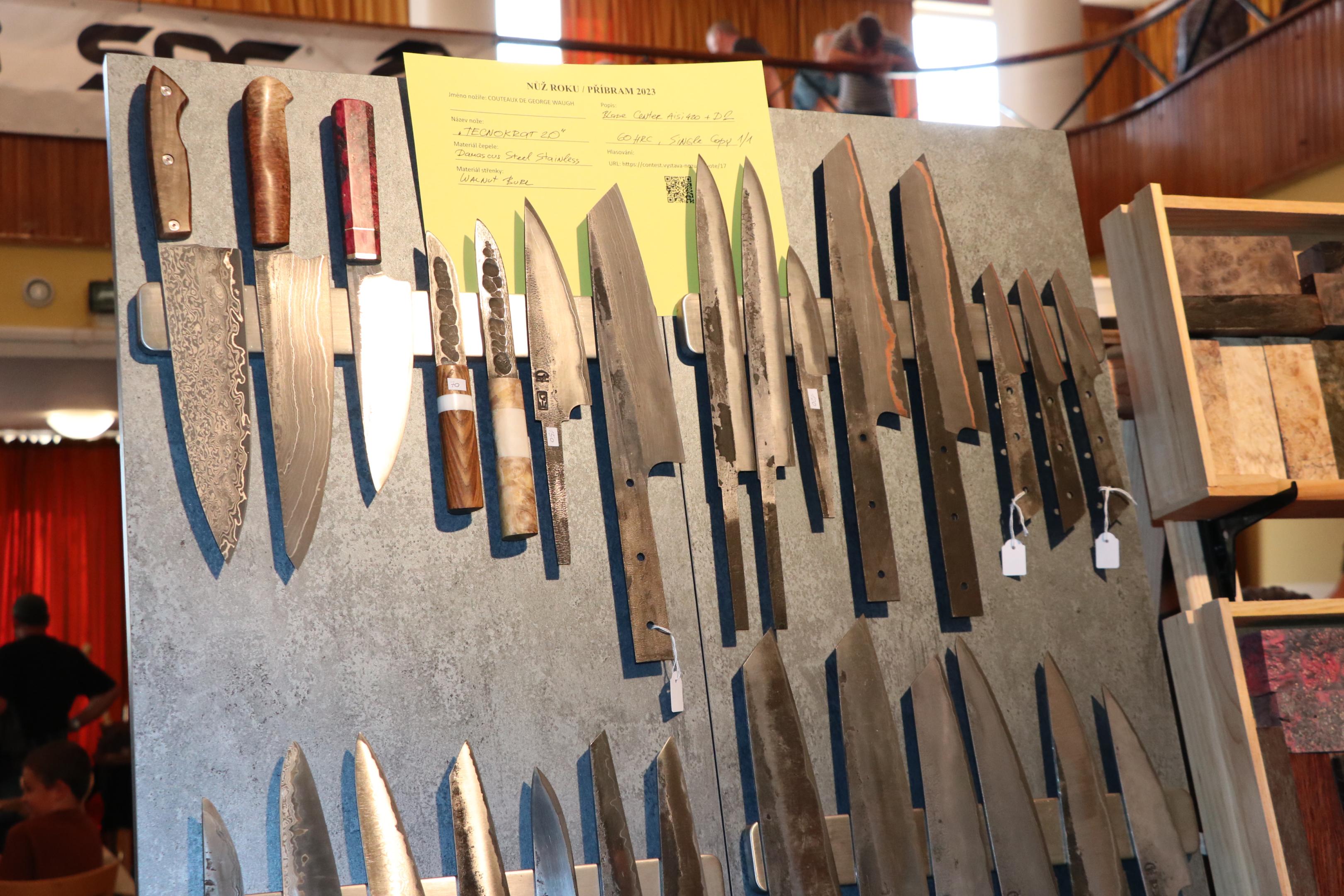
Kitchen knives made from carbon damask by Gerge Waugh (Fr). The first knife from the left ended

Kitchen knives made from carbon damask by Gerge Waugh (Fr). The first knife from the left ended
second in the Knife of the Year award.
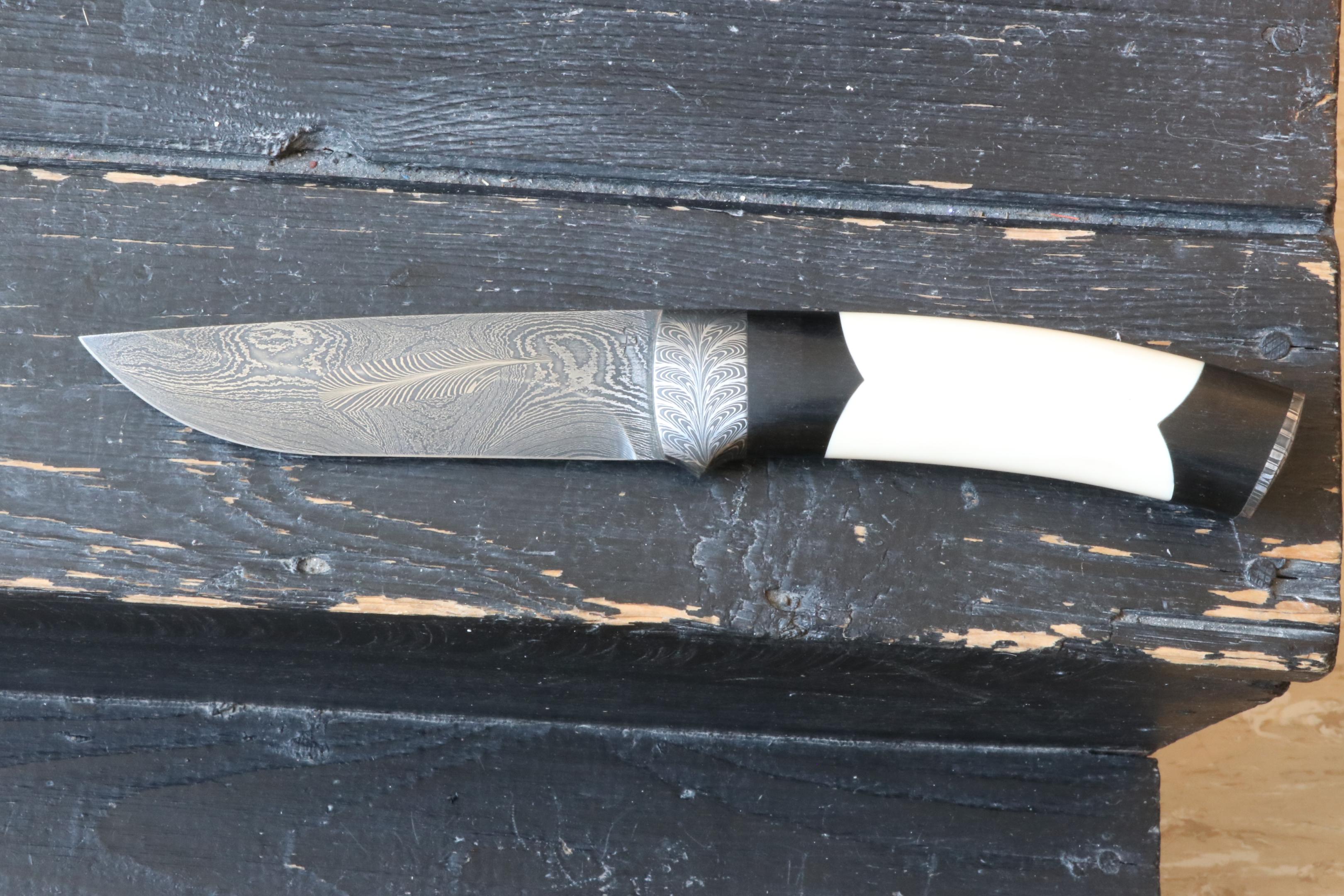
Pavel Ševeček, at present the best Czech master of mosaic and figural damask, presented this knife

Pavel Ševeček, at present the best Czech master of mosaic and figural damask, presented this knife
made from feather carbon damask with Ebony and Ivory handle. Overall length is 270 mm.
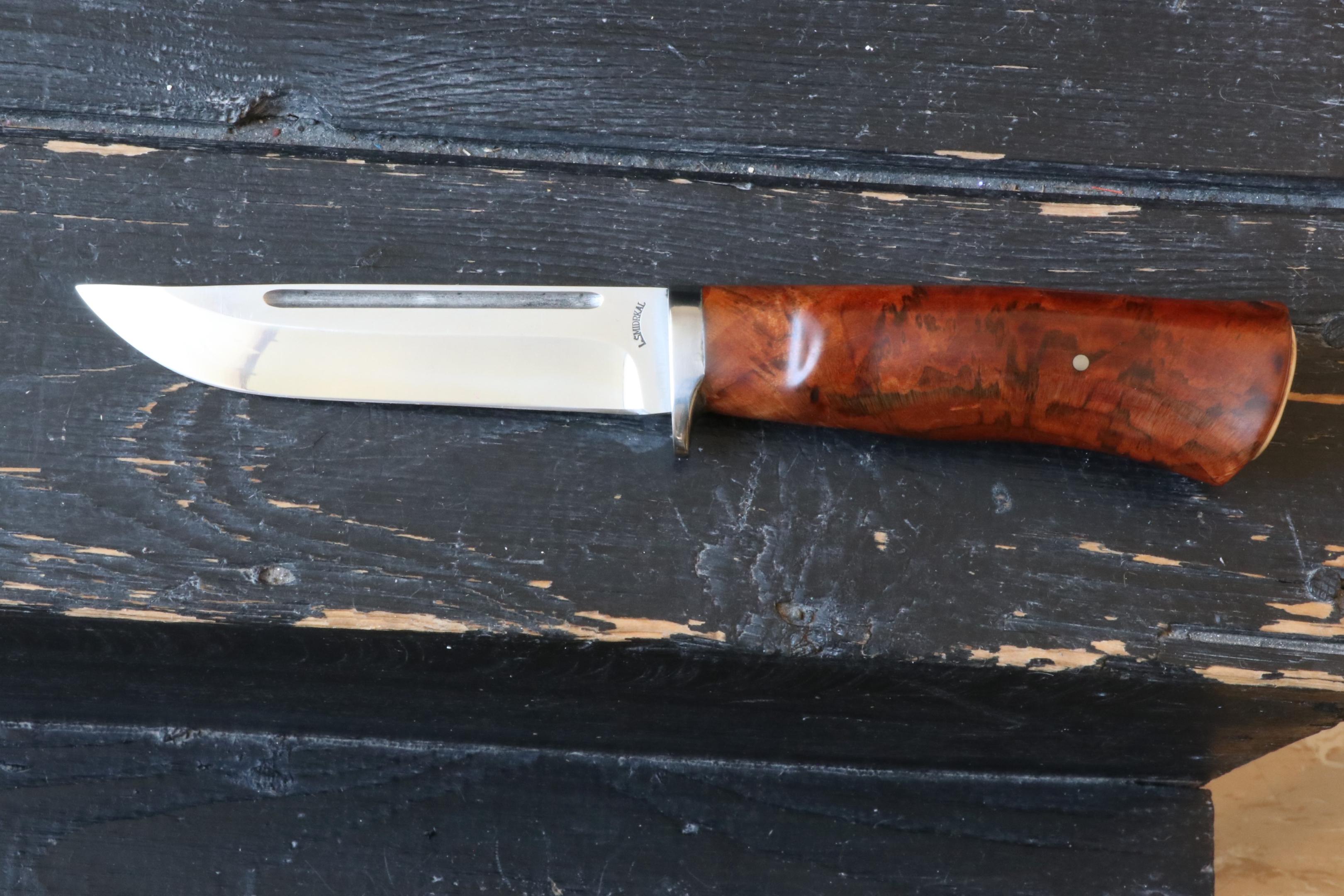
A simple, classic European shaped by Lubomír Šmidrkal, made to the highest level of aesthetics. The

A simple, classic European shaped by Lubomír Šmidrkal, made to the highest level of aesthetics. The
123 mm blade is RWL34, the handle is Maple and Elm.
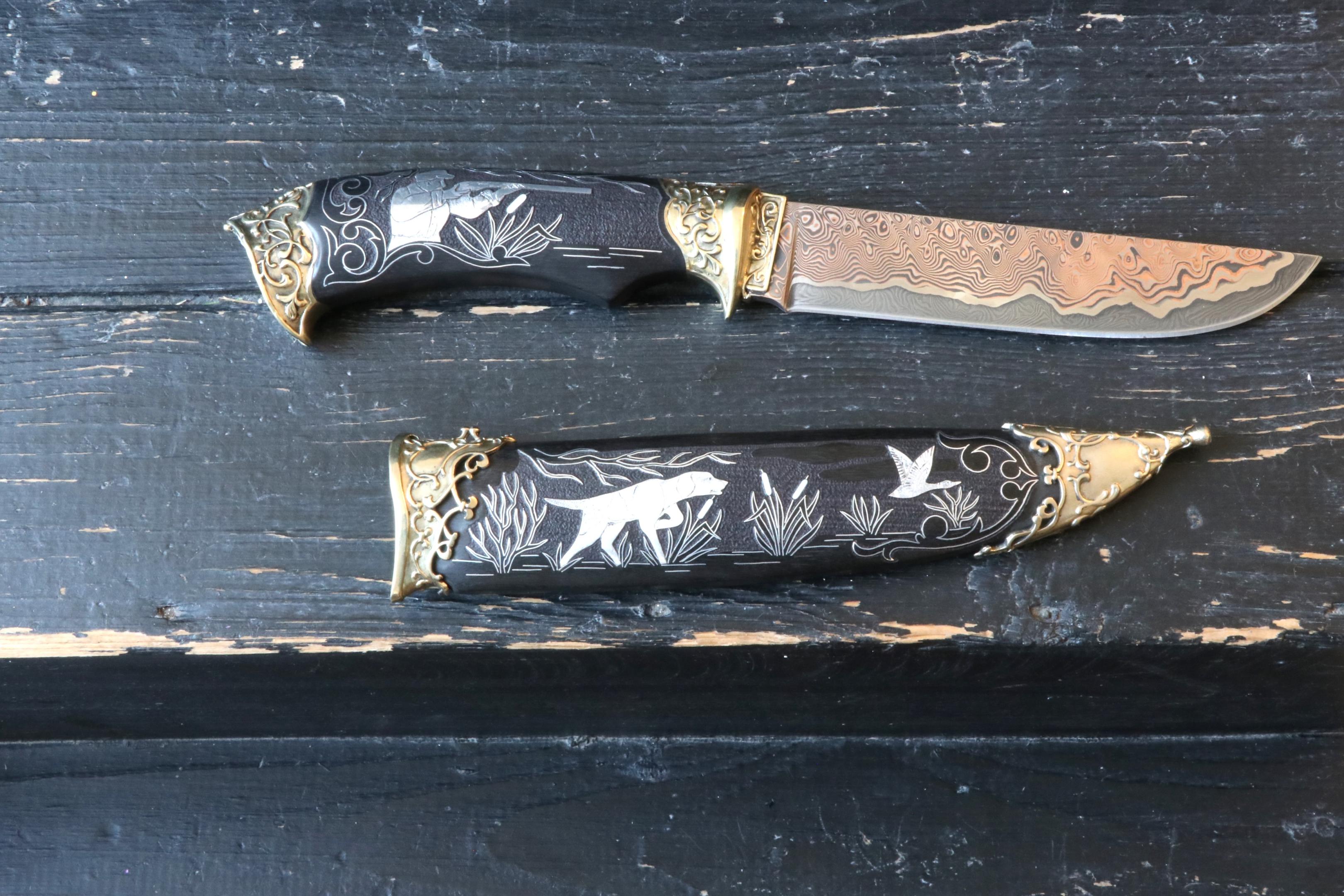
Brothers Berezhnye (Lithuania) presented this hunting knife with byzantine rich decoration. The blade is

Brothers Berezhnye (Lithuania) presented this hunting knife with byzantine rich decoration. The blade is
N690, the handle materials are Ebony. Melchior and Silver Intarsia. Overall length is 260 mm.
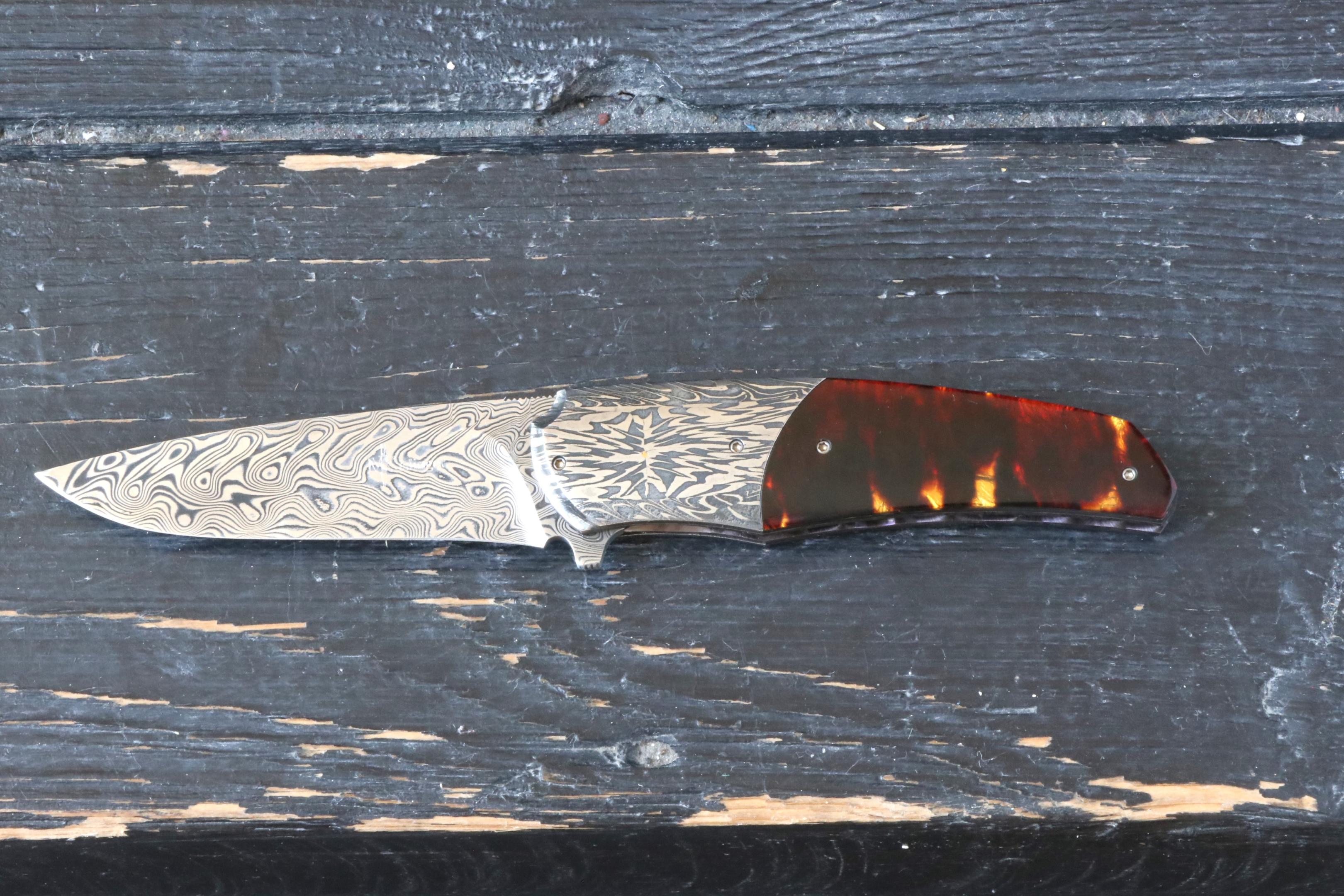
On his return to the exhibition floor, Miloš Kyslinger, one of leading makers of folding knives, presented

On his return to the exhibition floor, Miloš Kyslinger, one of leading makers of folding knives, presented
this elegant liner lock with 70 mm stainless Damasteel damask blade and turtle handle scales.
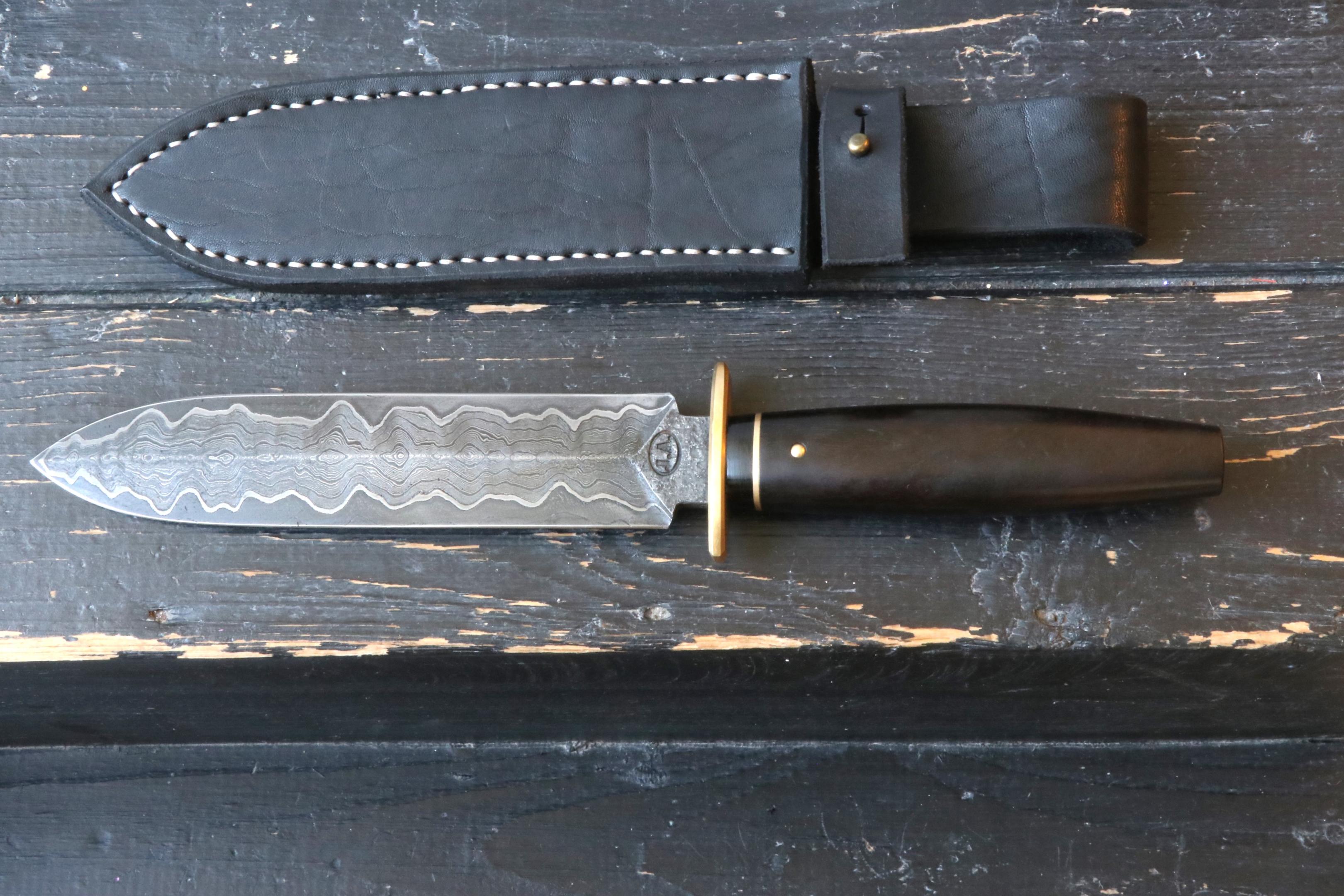
The winner of the Knife of the Year award, Příbram 2023, by Jakub Adamuška. The 190 mm blade is

The winner of the Knife of the Year award, Příbram 2023, by Jakub Adamuška. The 190 mm blade is
GoMai, the handle is Buffalo horn, Ebony and Brass.

You can find Hungarian master Janos Madars on virtually every Central Europe knife exhibition. His

You can find Hungarian master Janos Madars on virtually every Central Europe knife exhibition. His
production of simple working knives and utensils accompanied in Příbram with an elegant traditional
Hungarian bicska, decorated with brass and mosaic pins, with a 95 mm carbon Damask blade.

A set of two hunting knives by Arkadyi Dabakyan. The thin copper line between the layers of the blade

A set of two hunting knives by Arkadyi Dabakyan. The thin copper line between the layers of the blade
has become quite popular in forged blades.
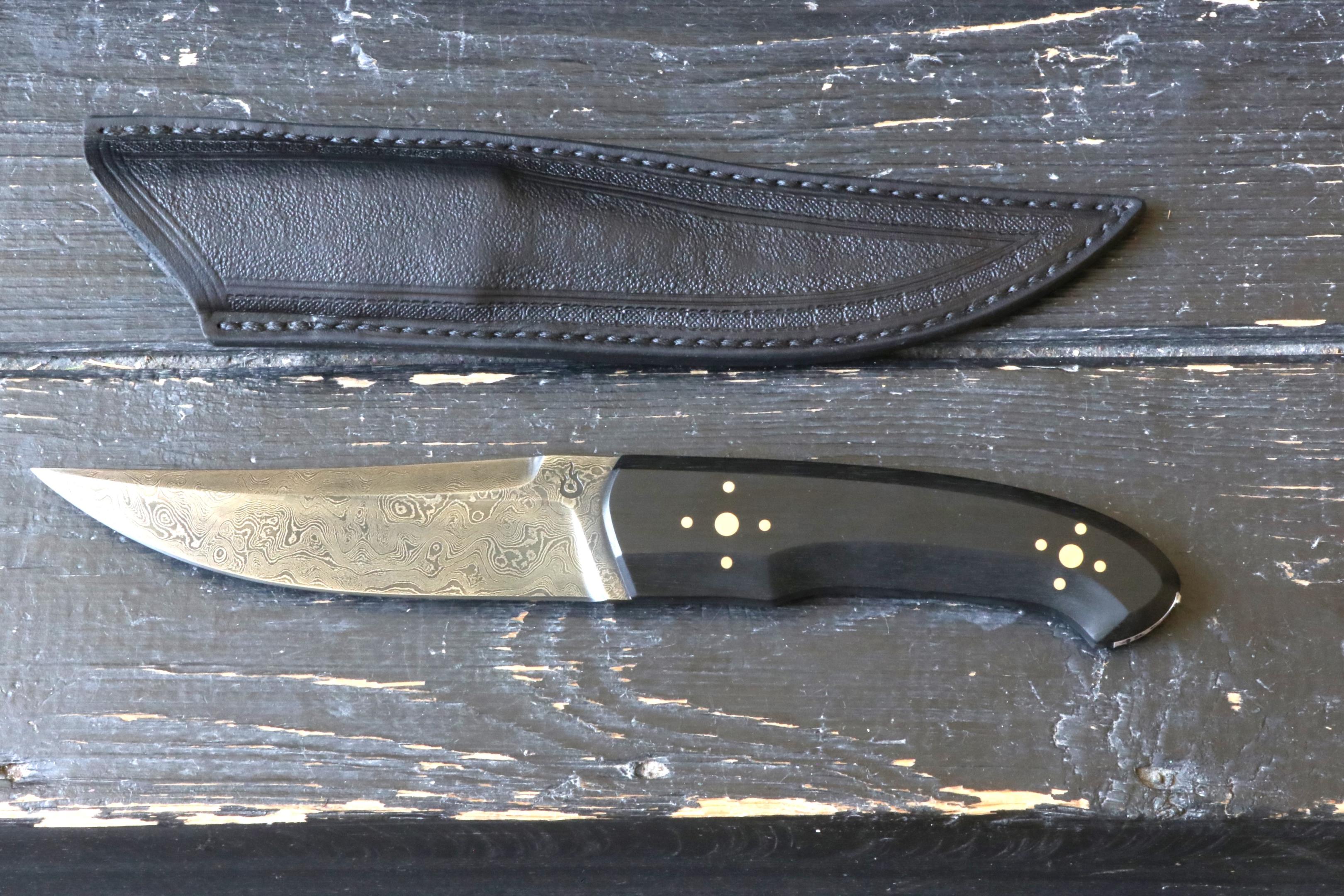
This knife by Stanislav Mátl ended in third place at the Příbram 2023 Knife of the Year award. The knife

This knife by Stanislav Mátl ended in third place at the Příbram 2023 Knife of the Year award. The knife
has a 124 mm Carbon Damask blade and Ebony and Brass handle.
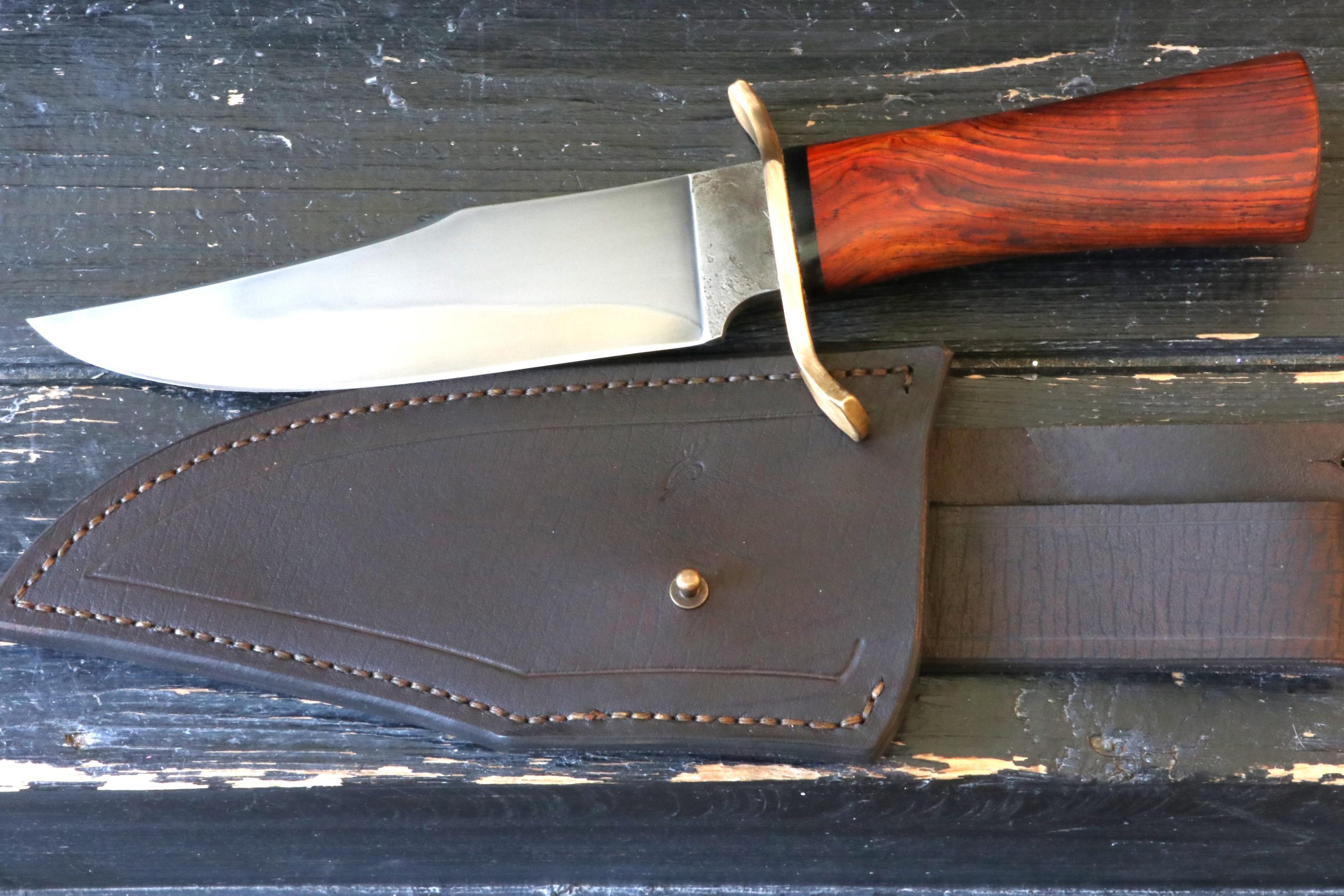
A hunting knife by Pavel Holub. The 185 mm blade is 80CRW2, the handle material is Cocobolo and Bronze.
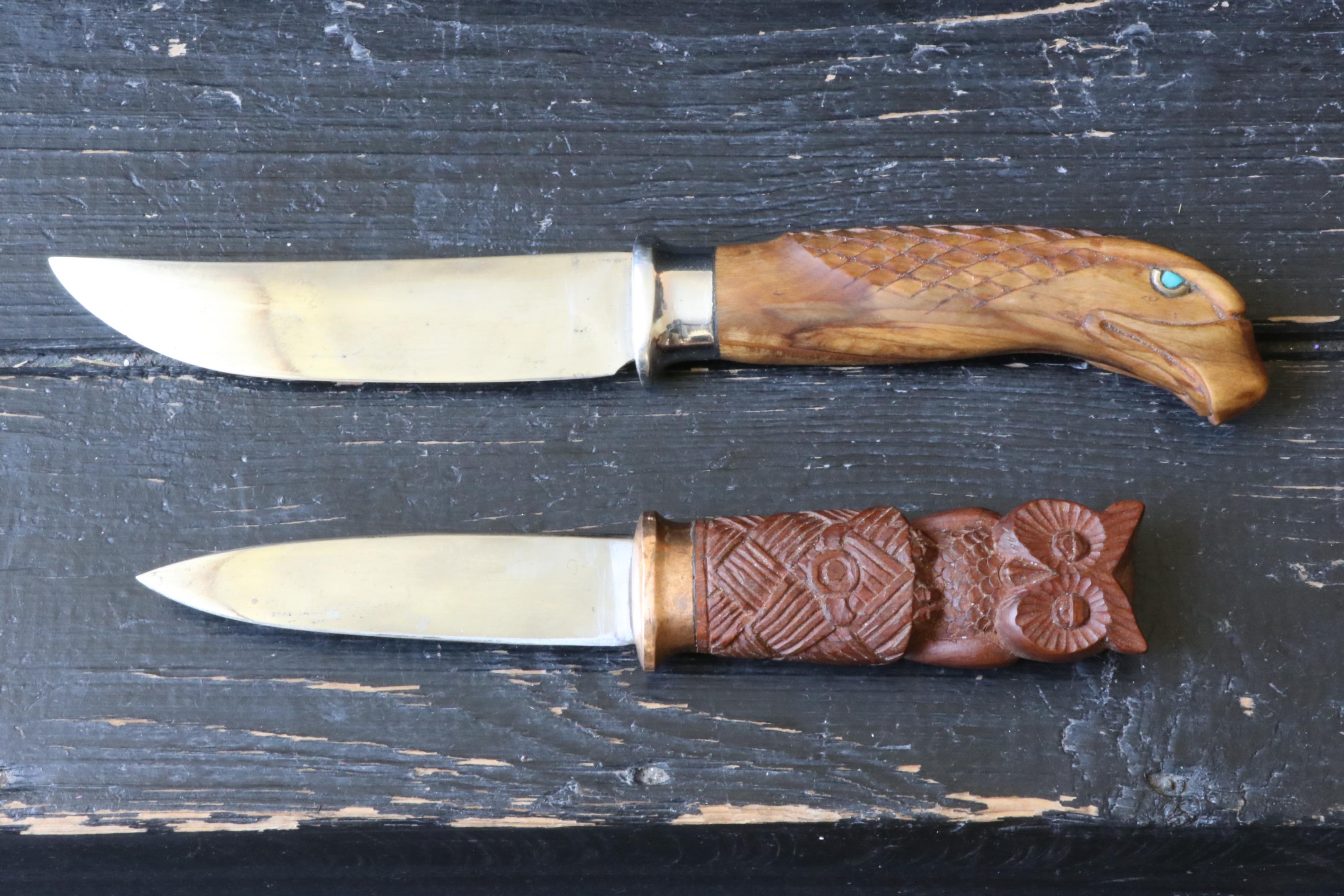
Two knives by Jiří Hamerník. Both have a 14260 blade. One handle is Pear and Bronze, the other is Olive

A hunting knife by Pavel Holub. The 185 mm blade is 80CRW2, the handle material is Cocobolo and Bronze.

Two knives by Jiří Hamerník. Both have a 14260 blade. One handle is Pear and Bronze, the other is Olive
with Turquoise and Alpaca.